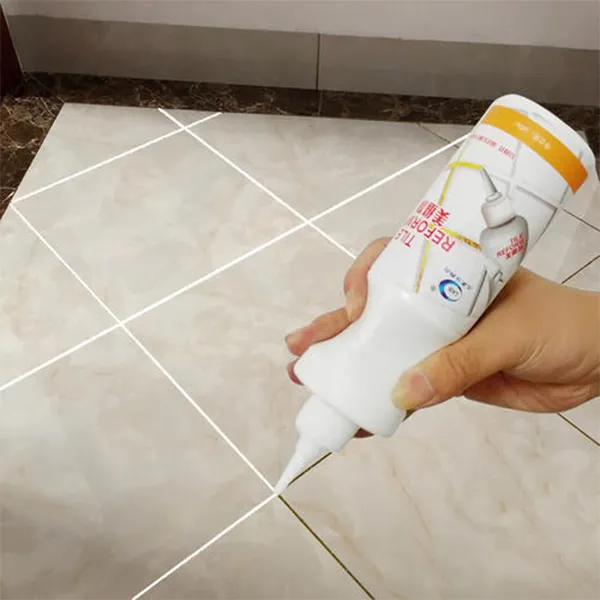Exploring Ceramic Adhesives Applications, Benefits, and Innovations
Ceramics have been an integral part of human civilization for thousands of years, with applications spanning art, construction, and manufacturing. Today, advancements in technology have led to the development of ceramic adhesives, a specialized category of adhesives that are crucial in modern industries. This article delves into the world of ceramic adhesives, exploring their applications, benefits, and the exciting innovations shaping their future.
What are Ceramic Adhesives?
Ceramic adhesives are bonding substances designed to adhere ceramic materials to each other or to different substrates. These adhesives can be organic or inorganic in nature and are formulated to withstand high temperatures, moisture, and chemical exposure, making them ideal for both industrial and domestic applications. Common types of ceramic adhesives include epoxy-based, silicone, and polysulfide adhesives, each featuring unique properties tailored to specific applications.
Applications of Ceramic Adhesives
Ceramic adhesives find utility across various sectors
1. Construction and Renovation In the building industry, ceramic adhesives are widely used for tile and stone installations. They provide a robust bond that withstands the stresses of temperature fluctuations and moisture infiltration. This makes them ideal for flooring, wall tiles, and outdoor installations.
2. Automotive Industry The automotive sector utilizes ceramic adhesives in bonding components subjected to high temperatures, including exhaust systems and heat shields. Their ability to resist thermal cycling and chemical corrosion makes them an essential choice for maintaining vehicle integrity.
3. Aerospace and Defense The aerospace industry leverages ceramic adhesives to bond components in aircraft due to their lightweight and heat-resistant properties. They are crucial in assembling parts like turbine engines and fuselage components, where safety and durability are paramount.
4. Electronics and Appliances Ceramic adhesives are used in the electronics industry for potting and encapsulating electronic components. Their insulating properties help protect sensitive parts from environmental factors while ensuring reliable performance.
5. Art and Restoration In the realm of art, ceramic adhesives are invaluable for repairing and restoring historical artifacts and ceramics. Specialized formulations allow for the careful adhesion of fragile pieces without compromising their integrity.
Benefits of Ceramic Adhesives
The advantages of using ceramic adhesives are multifaceted
ceramic adhesives

- High Temperature Resistance One of the most significant benefits is their ability to withstand extreme temperatures, which is vital for applications in harsh environments, such as automotive and aerospace sectors.
- Moisture and Chemical Resistance Ceramic adhesives are formulated to resist moisture and various chemicals, ensuring long-lasting bonds even in challenging conditions.
- Durability These adhesives provide strong mechanical bonds that can endure stresses and strains, ensuring the longevity of the bonded materials.
- Versatility They can bond a wide range of materials, including ceramics, metals, glass, and plastics, making them highly versatile for diverse applications.
- Low Shrinkage Many ceramic adhesives are designed to minimize shrinkage upon curing, which is crucial for maintaining the integrity and alignment of bonded components.
Innovations in Ceramic Adhesives
As industries evolve, so too do the formulations of ceramic adhesives. Researchers and manufacturers are focusing on creating new compositions that enhance performance while reducing environmental impact. Innovations include
- Eco-Friendly Formulations There is a growing trend towards developing adhesives with lower volatile organic compounds (VOCs) and sustainable materials to meet environmental regulations and consumer demand for green products.
- Nano-Technology The incorporation of nanomaterials into adhesive formulations is enhancing properties like strength, thermal stability, and adhesion performance. These advancements are paving the way for the next generation of ceramic adhesives.
- Smart Adhesives The future may see the development of smart ceramic adhesives that can change properties based on environmental conditions, offering possibilities for self-healing or adaptive bonding applications.
Conclusion
Ceramic adhesives are a vital component in various industries, providing solutions that enhance performance and durability. As technology advances, the formulations and applications of ceramic adhesives will continue to expand, leading to innovations that address new challenges. Their unique properties make them indispensable in fields ranging from construction to aerospace, ensuring that they will play a significant role in the future of material bonding. Understanding and utilizing ceramic adhesives effectively could be key to achieving greater efficiency and sustainability in numerous applications.
-
Rdp Powder: Key Considerations for Wholesalers in the Building Materials IndustryNewsJul.08,2025
-
Key Considerations for Wholesalers: Navigating the World of Hpmc - Based ProductsNewsJul.08,2025
-
Hpmc Detergent: Key Considerations for WholesalersNewsJul.08,2025
-
Key Considerations for Wholesalers: China Hpmc For Tile Adhesive, Coating Additives, Concrete Additives, and MoreNewsJul.08,2025
-
Crucial Considerations for Wholesalers: Navigating the World of Construction MaterialsNewsJul.08,2025
-
Key Considerations for Wholesalers Sourcing Additive For Cement, Additive For Concrete, Additive For Putty from Additive Manufacturer Shijiazhuang Gaocheng District Yongfeng Cellulose Co., Ltd.NewsJul.08,2025




